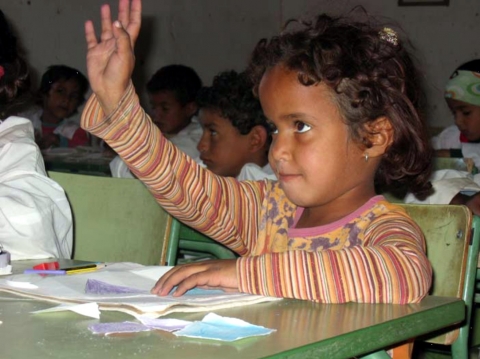Selected and coordinated by the Fondazione Mondo Digitale, these schools will present their projects at tomorrow’s press conference.
Digital Bridge. A Technological Bridge
With the Saharawi People and Cameroon
8 October 2008 – 12:00
Regione Lazio - Sala Aniene
Rome meets Fontem
From the “Adopt a Human Right” Project to “Digital Bridge” generations of students have worked on cooperation to advance development. Students have collected funds to purchase bicycles for the students in Cameroon that have to walk as far as 14 km. to reach their schools. Moreover, they have also designed satellite systems and solar panels. The “Rome meets Fontem” project participated in the third edition of the Global Junior Challenge, reaching the finals.
Liceo classico Kant (Piazza Zambeccari 19, Roma)
School outside of School
The leading school for the Schools meet Africa Network (SIR) also participates in cooperation activities with Rwanda and Malawi. The twinning with Cameroon began in 2001 with the exchange of didactic materials, meetings, grants, etc. Communication between the Roman school and Fontem produces a continuous flow of information. Cooperation activities are documented on-line in the “School outside of School” section and are an important part of the students’ overall training.
Liceo classico Bertrand Russell (via Tuscolana 208, Roma)
First Steps in Cooperation
This institute has a long-standing tradition in the reception of children from different cultures. Cultural mediators support children in the creation of a macro-project for school reception. New technologies and intercultural language are codes that are an integral part of the educational programme.
Circolo didattico di Passoscuro (via Serrenti 72, Passoscuro, Roma)
Saharawi Colours and Sounds
For more than ten years, this institute has conducted the “Sounds and Images” Project to make students more aware and bring them into closer contact with multimedia language. This year, for the first time, students will provide the expression of new media to international cooperation efforts by employing the “Saharawi Colours and Sounds” to inform students about development and intercultural exchange.
Istituto tecnico industriale Einstein ( via Pasquale II 237, Roma)
Cooperation Underway
Why has the Saharawi Arab Democratic Republic been awaiting recognition by the UN for over three years? New technologies and video-conferencing tools allow students in other countries to study this issue and how the destines of communities and towns are resolved.
Liceo scientifico Newton (viale Manzoni 47, Roma)
A Summer Welcome Lasts a Year
Every summer this institute welcomes Saharawi children for their summer vacations. The Bambini+Diritti Association organised a full programme of teaching and recreational activities involving both the school and the neighbourhood. This year, however, virtual activities are going to continue via distance communication and other means. The situation of the Saharawi refugees will become a topic of study for Roman students who will create a multimedia didactic approach.
Istituto Pio XII (Via Casilina 767, Roma)
School and Energy Biscuitts
The Saharawi refugees depend exclusively on humanitarian aid. The Food Programme of the United Nations provides 125,000 monthly food rations and 10,000 extra rations to children suffering from malnutrition and pregnant women. More than 27,000 students receive energetic biscuits. Malnutrition means that celiac disease is widespread. What can be done? These are the issues addressed by the students preparing a multimedia didactic approach to food and nourishment.
299° Circolo didattico Papa Wojtyla (via L. Passi 57, Roma)
